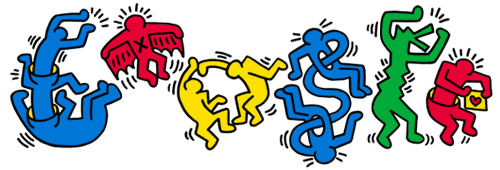In the early 1980s, as a native Manhattanite raised by and among artists, I was aware of Keith Haring and his work, but my 1984 job interview would be the first time we would meet. After some awkward small talk, we quickly realized that we had many friends and social activities in common. At that age (we were both just 25), such things meant a great deal. He hired me as his personal assistant and studio manager, and I worked alongside him until his premature death from AIDS-related illnesses in 1990. We shared many interests, worked well together, and established a deep, reciprocal trust. When he became ill and decided to create the Keith Haring Foundation, I was honored to accept his offer to be its executive director. I have now held that position for 23 years, and my responsibility and privilege is to promote and manage a legacy: respecting past connections and relationships, cultivating and nurturing new ones, staying true to Keith's artistic and philanthropic goals, and doing whatever is needed to ensure his place in history.
Keith tapped into the collective unconscious and expanded upon a universal language of symbols and messages – executed in simple lines, energized by the spirit (and for a time, context) of graffiti and fueled by his intense commitment to make his work as accessible as possible. Although he first came to the public’s attention through his chalk drawings in the New York City subway stations, he utilized the same graphically compelling visual vocabulary in thousands of works on paper, canvas, limited edition prints and multiples, sculpture, public murals and, eventually, merchandise – avenues of dissemination that to him were all of equal importance. This ambitious, populist spirit and prolific output brought his work to the widest audience imaginable.
Curious and cautious about the role technology was beginning to play in our society, Keith often included
images of computers in his work. He was both excited by and nervous about the impact of the personal computer on our daily lives. Using his art to convey these and other social concerns was at the root of his ever-increasing popularity. Over the past 30 years, images he created that speak about racism, drug addiction, AIDS and tolerance have become iconic.
Keith once expressed his fantasy that in the future, his images might be "beamed" around the world in seconds. That future is now, and I firmly believe that for Keith, the Internet would have been a realization of that excitement and cautious curiosity. That the world’s largest search engine is honoring Keith's birthday is nevertheless a perfect, 21st century, tribute to his art and ambitions. As Keith himself said in 1984, "Art lives through the imaginations of the people who are seeing it. Without that contact, there is no art. I have made myself a role as an image-maker of the twentieth century and I daily try to understand the responsibilities and implications of that position. It has become increasingly clear to me that art is not an elitist activity reserved for the appreciation of a few, but for everyone, and that is the end toward which I will continue to work."
Keith tapped into the collective unconscious and expanded upon a universal language of symbols and messages – executed in simple lines, energized by the spirit (and for a time, context) of graffiti and fueled by his intense commitment to make his work as accessible as possible. Although he first came to the public’s attention through his chalk drawings in the New York City subway stations, he utilized the same graphically compelling visual vocabulary in thousands of works on paper, canvas, limited edition prints and multiples, sculpture, public murals and, eventually, merchandise – avenues of dissemination that to him were all of equal importance. This ambitious, populist spirit and prolific output brought his work to the widest audience imaginable.
Curious and cautious about the role technology was beginning to play in our society, Keith often included
Keith once expressed his fantasy that in the future, his images might be "beamed" around the world in seconds. That future is now, and I firmly believe that for Keith, the Internet would have been a realization of that excitement and cautious curiosity. That the world’s largest search engine is honoring Keith's birthday is nevertheless a perfect, 21st century, tribute to his art and ambitions. As Keith himself said in 1984, "Art lives through the imaginations of the people who are seeing it. Without that contact, there is no art. I have made myself a role as an image-maker of the twentieth century and I daily try to understand the responsibilities and implications of that position. It has become increasingly clear to me that art is not an elitist activity reserved for the appreciation of a few, but for everyone, and that is the end toward which I will continue to work."
Julia Gruen, Executive Direct of the Keith Haring Foundation

